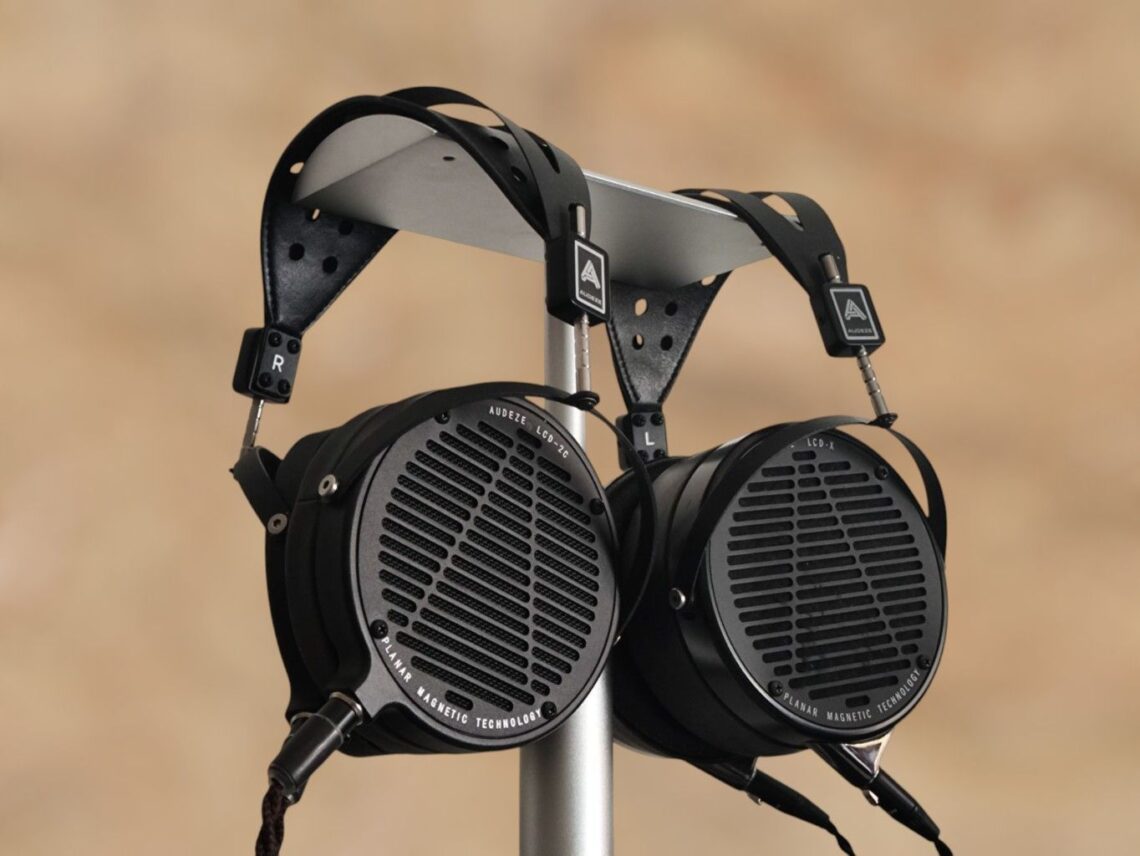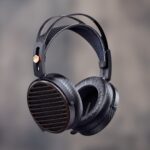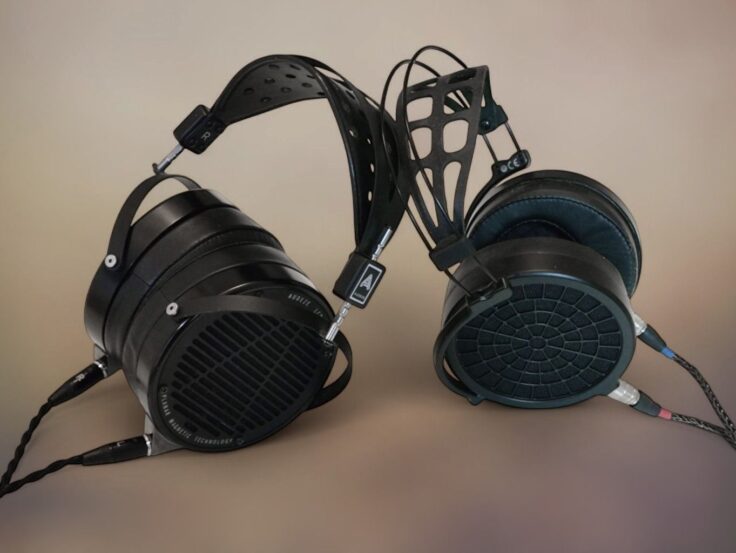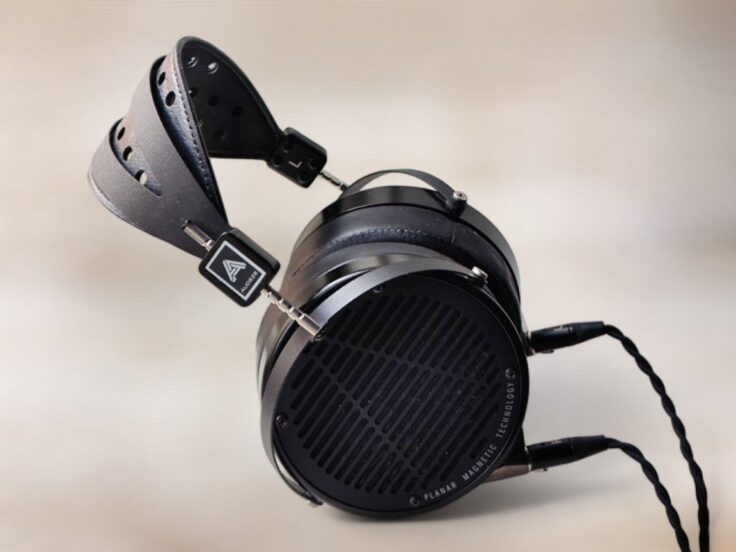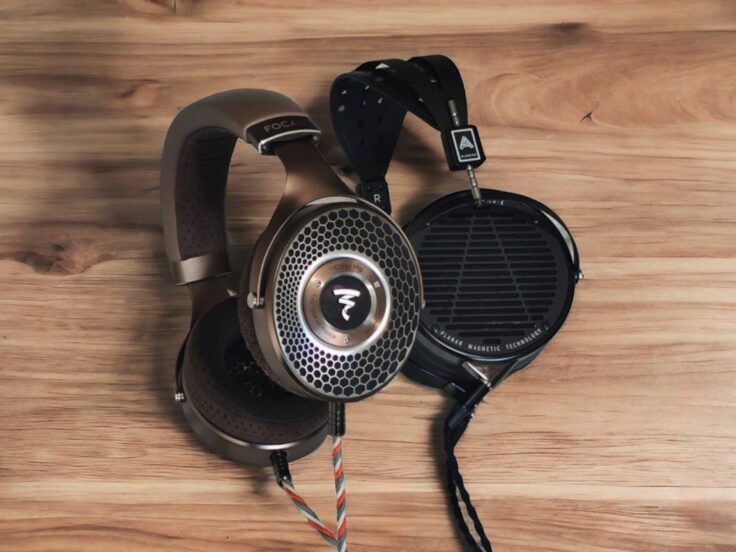The first LCD-2 was released in 2009 and the LCD-2 has since undergone multiple revisions, but Audeze never changed the name. These versions are often unofficially referred to as the LCD-2 Rev.1, LCD-2 Rev.2, LCD-2.1, LCD-2.2, LCD-2 Pre-Fazor, LCD-2 Fazor etc. Over the years, both external design elements and internal components have been updated, including changes to the driver and the addition of Fazor waveguides.
The LCD-2 Classic is a simplified variant of the modern LCD-2. While they share many similarities, the Classic is more affordable and omits the Fazor waveguides. Its housing resembles the first LCD-2 (rev.1) shape but replaces the wooden construction with a composite material to reduce costs and prevent cracking. Based on the specifications, the Classic appears to use the same driver as the LCD-2, but has a different cup design, earpads, and, notably, absent Fazor waveguides. The LCD-2 Classic is often referred to as LCD-2C.
The Audeze LCD-X was launched back in 2013 as a low impedance, higher sensitivity option to the LCD-2 and 3. It was aimed at studio work and professionals, and it became indeed a successful venture. Audeze has made some silent but major changes to the LCD-X over the years as well. The latest version of the LCD-X is often cited as “LCD-X 2021”. The changes are many, but most importantly, the driver has been modified. The current version is the most neutral sounding.
AUDEZE LCD-2 CLASSIC SPECIFICATIONS
- Open back construction
- Planar magnetic driver
- Transducer size 106 mm
- Impedance 70 ohms
- Sensitivity 101 dB/1mW
- Maximum power handling 5W RMS
- Maximum SPL >130dB
- Frequency response 10Hz – 50kHz
- THD <0.1% @ 100dB
- Minimum power requirement >100mW
- Recommended power level>250mW
- Weight 544g
Amazon LCD-2C
LCD-X SPECIFICATIONS
- Open back construction
- Fazor waveguides
- Planar magnetic driver
- Transducer size: 106 mm tall
- Impedance: 20 ohms
- Sensitivity: 103 dB/1mW
- Max power handling: 5W RMS
- Maximum SPL: >130dB
- Frequency response: 10Hz – 50kHz
- THD: <0.1% @ 100 dB SPL
- Min recommended power: > 100mW
- Recommended power level: >250mW
- Weight: 612g
Amazon: LCD-X
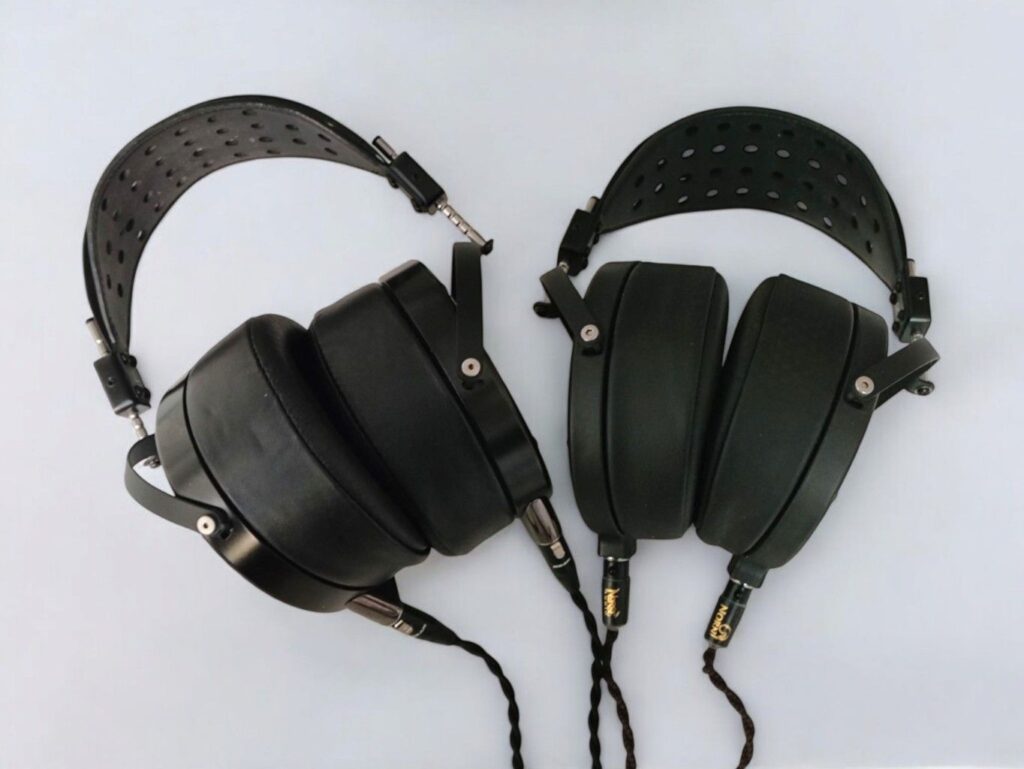
BUILD AND COMFORT
The LCD-X and the LCD-2C are very similar in build and design. The headband is identical, and the housings share the same circular shape and size. Both are black, but the LCD-X is made of metal, while the LCD-2C is made of composite material. The differences between the two are easy to spot, as the LCD-X has external connectors, whereas the LCD-2C has connectors molded onto the housing ring.
One significant difference is the earpads. The LCD-X features real leather pads, while the LCD-2C uses protein leather. Additionally, the LCD-X pads are more angled and significantly thicker in the back. Personally, I find the less angled pads of the LCD-2C more comfortable, but this will vary from person to person.
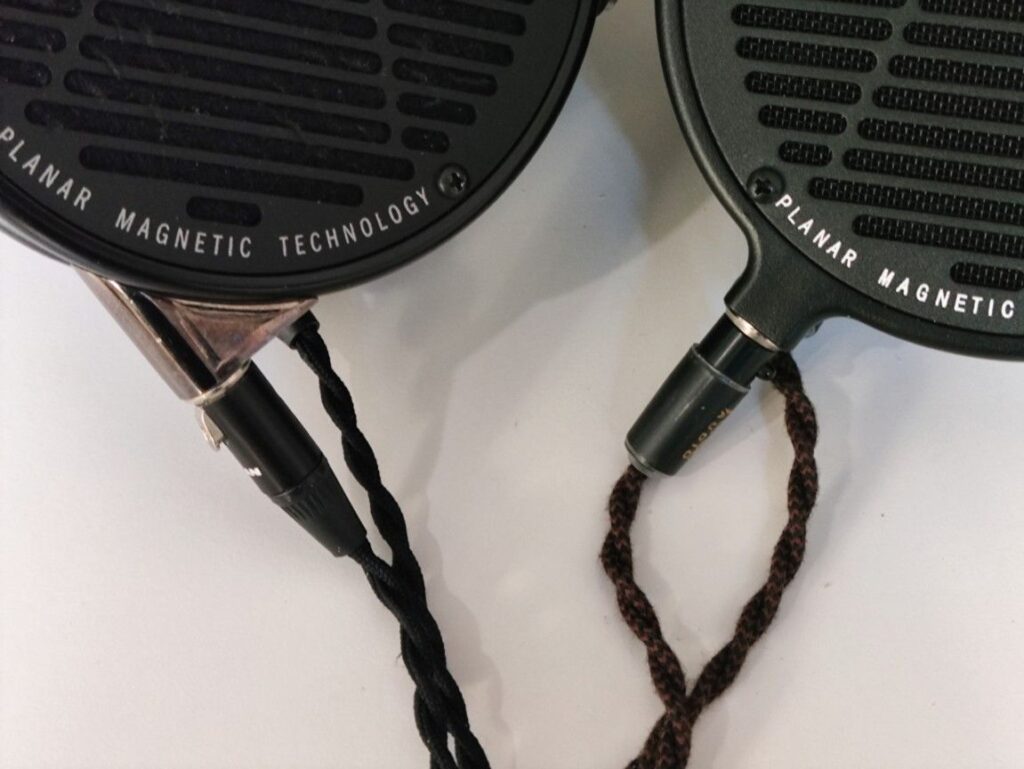
COMPARISONS
Associated equipment:
- Amplifier: Topping A90
- DAC: RME ADI-2 DAC FS
New Life Baby Paris by Mala
This electrifying, electronic-driven track sounds fantastic on both headphones. The bass is particularly impressive, but overall, both deliver an excellent performance. While they share a similar tuning, the LCD-X offers a tighter, more precise presentation in direct comparison.
Rocket Man by Bob James Trio
The LCD-2C comes across as slightly brighter and rougher around the edges, while the LCD-X delivers a more refined and delicate presentation.
Aquela Muhler by Vinicius Cantuaria
They’re quite similar overall. The LCD-X feels more focused, the LCD-2C seems to have a larger soundstage.
Jambi by Tool
Here, the differences are more pronounced. The LCD-X sounds smoother and darker, while the LCD-2C is brighter with a larger soundstage but more diffuse imaging.
Golden Age by Beck
They’re quite similar, with the LCD-X sounding slightly smoother and more delicate, while the LCD-2C has a slightly rawer presentation.
Young Vivaldi RV 820 etc by Modo Antiquo
They’re both good and quite similar but the LCD-2C is brighter, the LCD-X feels smoother and more focused.
Summer 3 Vivaldi Recomposed by Max Richter
Again, the LCD-X has a better, more focused presentation. It’s strange, because the LCD-2 sounds good on its own, but in direct comparison, the LCD-X makes it sound a bit fuzzy.
Winter 1 Vivaldi Recomposed by Max Richter
They’re a bit different here. In direct comparison, the LCD-2C sounds more shouty, with less finesse and refinement. However, once you adjust to the differences, it remains completely enjoyable—just not as detailed or smooth as the LCD-X.
As Before by Olga Konkova
The piano is quite crisp with the LCD-2C, while notably smoother with the LCD-X. Vocals also sound smoother, darker, and more toned down on the LCD-X, with the cajón bass drum slightly more pronounced.
Sunrise by Norah Jones
Vocals are more upfront with the LCD-2C, and the overall sound is crisper. The soundstage is larger, but the imaging is more diffuse. The LCD-X, once again, sounds smoother and better defined.
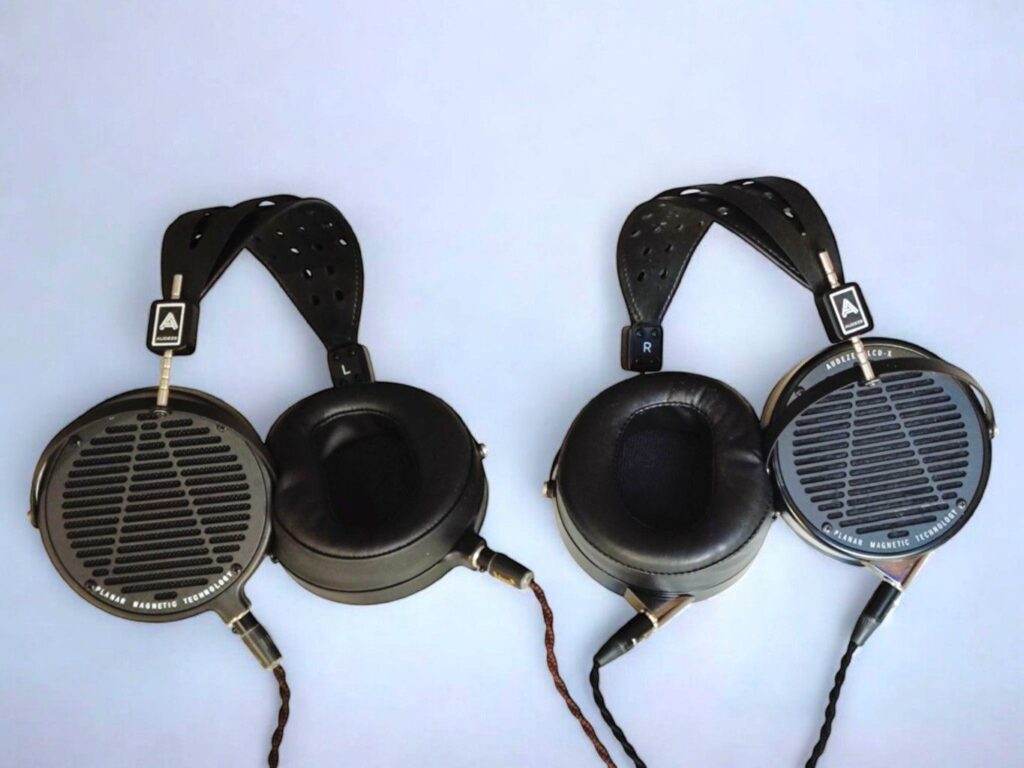
WRAPPING IT UP
Sound Signature
The general sound signature is very similar between the LCD-X and LCD-2C. However, they differ slightly in tonal balance. The LCD-X is generally darker and smoother, while the LCD-2C is a bit brighter and crisper.
Treble
The treble is slightly more energetic on the LCD-2C, while it is more refined on the LCD-X.
Midrange
The midrange is similarly tuned, but the LCD-2C is a bit more energetic in the upper mids. However, it lacks some of the refinement, smoothness, and delicacy of the LCD-X.
Bass
The bass great with both. The LCD-X has slightly thicker and fuller bass.
Soundstage and Imaging
The LCD-X has better imaging, while the LCD-2C is somewhat more diffuse. On the flip side, the LCD-2C sounds a bit larger, while the LCD-X feels a bit more intimate.
Detail, Dynamics, and Timbre
In terms of detail retrieval, the LCD-X is generally better. It’s smoother, more refined, and more even. Dynamics and timbre are quite similar between the two. As mentioned, the LCD-2C has slightly more treble intensity and upper midrange energy, giving it a generally crisper sound.
AMPLIFICATION
So far, I have compared them using the same amplifier, the Topping A90, which is a great all-around performer. However, I also experimented with alternative and more expensive amplifiers for further comparison.
With the LCD-X, there wasn’t too much of a difference between the Topping A90, the Erzetich Perfidus, the Woo WA22, and the Bryston BHA-1. However, with the LCD-2C, there was a significant difference. The more expensive amplifiers brought the LCD-2C much closer to the sound quality of the LCD-X, making them sound more equal. In other words, if you already have a high-quality, expensive amplifier, the LCD-2C might sound as good as the LCD-X—but starting from scratch, it’s important to factor in the total cost of the system.
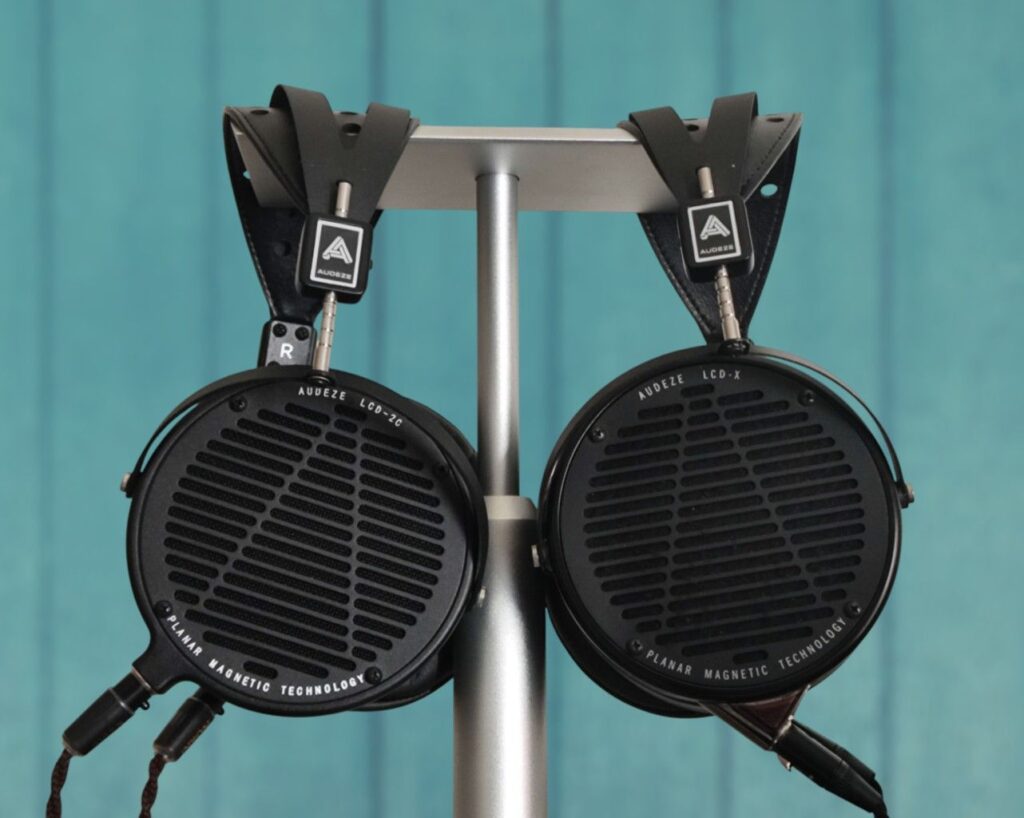
CONCLUSION
The LCD-X and LCD-2 Classic have a lot in common. Their tuning is very similar, and the general characteristics of the sound leave little doubt that they come from the same manufacturer and share the same heritage.
That said, there are differences. The LCD-2 Classic is slightly brighter and more diffuse-sounding, but it has a larger soundstage. The LCD-X offers better detail, is more nuanced, and smoother. Its tonality is slightly darker, the soundstage is more intimate, but the imaging is better. The LCD-2 Classic scales more with the amplifier, though, and with the best amplifiers, the difference between the LCD-2 Classic and the LCD-X becomes very small.
Thanks for reading. You can support us by purchasing anything using any of our affiliate links.
Any purchase you make on Amazon or Linsoul with any of our affiliate links will give us a small provision at no cost to you.
We only get a provision for items that are not returned, so there’s no incentive for us to recommend something that’s not good.
Linsoul : Headphones, Earbuds, Wireless Earbuds, Desktop DAC/AMP, Portable DAC/AMP, Digital Audio Players,
Amazon: Headphones, IEMs, Headphone Amplifiers, Home Audio or Anything else.
.
If you enjoyed this article or other content on The Headphoneer, you might consider leaving a small donation to keep this website up and running. No donation is too small. Thanks for supporting us!
If you like our work please follow us on Instagram, Facebook and Twitter , it will help us grow. Sharing is caring 🙂


